Raven Halfmoon, Caddo Nation, channels generations of ancestors in her totemic sculptures. Considering herself a “cultural preservationist,” she is realizing Native American art’s relevancy now more than ever. In this larger conversation about identity and heritage, she appropriately uses these themes in her work to connect with elders and peers. She attended the University of Arkansas where she earned a double Bachelors Degree in ceramics/painting and cultural anthropology. Often looking to her people as a source of inspiration, Halfmoon retains a contemporary look at their place in society as well as her own.
Tell us a little about yourself. Where are you from originally and when did art first enter your life?
I am originally from Norman, Oklahoma and an enrolled citizen of the Caddo Nation of Oklahoma. I have been drawing and painting ever since I can remember. I was always encouraged to express myself and be creative as a child. I was always drawn to clay as a material, and made some pots with elders in my tribe when I was young. However, I took my first ceramics course when I was a sophomore in college and fell in love. It was in college at the University of Arkansas, where I really found my voice. As well as having a degree in ceramics and painting, I also have one in cultural Anthropology. The Caddo Nation is originally from the Northwest Arkansas region and the U of A was one of the few places in the world that had ancient pots, artifacts and ceramic sculptures from my Caddo ancestors. I was able to learn significant tribal history, hold artifacts made by my ancestors while at the same time building a contemporary body of work on a modern platform. Identity and heritage are important aspects within my work. Ceramics is something that dates back thousands of years within my tribe and it is an art and tradition that has been revered not only in Caddo culture, but across Indigenous societies since time immemorial. These crafts are part of the foundation of our tribal heritage – they tell our story and are passed from generation to generation.
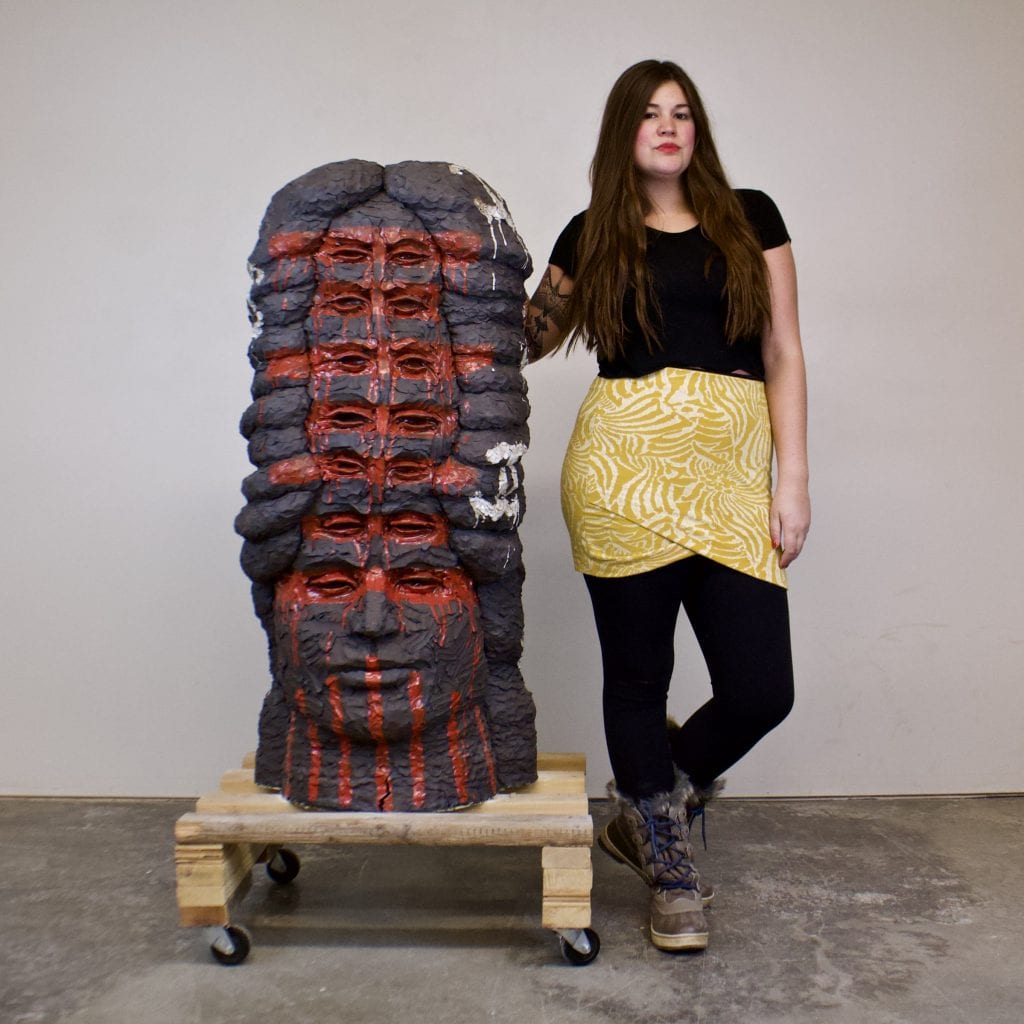
Courtesy of the artist
What is your process like? How do you begin a work?
My process starts with an experience or idea that I want to convey through my sculptures and feel I need to share with the world. My sculptures are based on my personal history, culture and experiences. I take influence from my experiences living as a Native American and woman. The artwork is born from Caddo history, cultural heritage, political movements, conversations I have with people regarding native issues, music, fashion and the internet. Through my sculptures, I want to tell a story both of how one understands self and culture, but also what defines these ideals in America today.
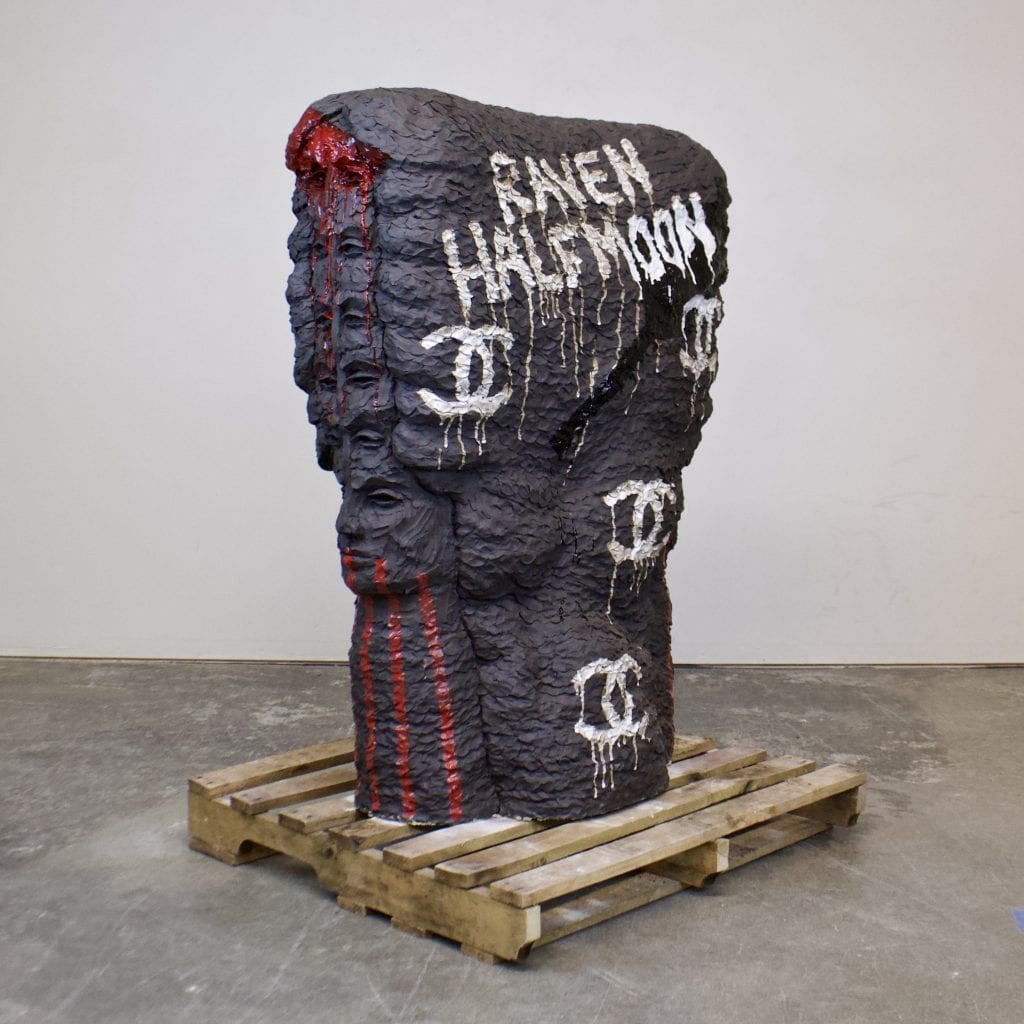
Courtesy of the artist
What’s your favorite part of that process?
My favorite part of the process is building and using the clay to push and pull itself into what I have envisioned. I love building and getting my hards dirty in clay. I enjoy every part of the building process from coil rolling to shaping details of a face. When I create a piece I am very precise about what the outcome should look like and for me, I enjoy the challenge of recreating my idea or sketch. I also love glazing. In the past, I have painted on 5ft canvases, so glazing my large heads or figurative sculptures satisfies me in the same way. For me personally, I am constantly challenged by the technicalities of ceramics and building large scale artwork. The real challenge for me is not the concepts or the ideas for my work, but physically executing the sculptures. Half of the work is not building the sculpture itself, but figuring out how to move it , fire it, unload it and ship it. However, I believe being challenged is important in my studio practice and imperative for producing great work.
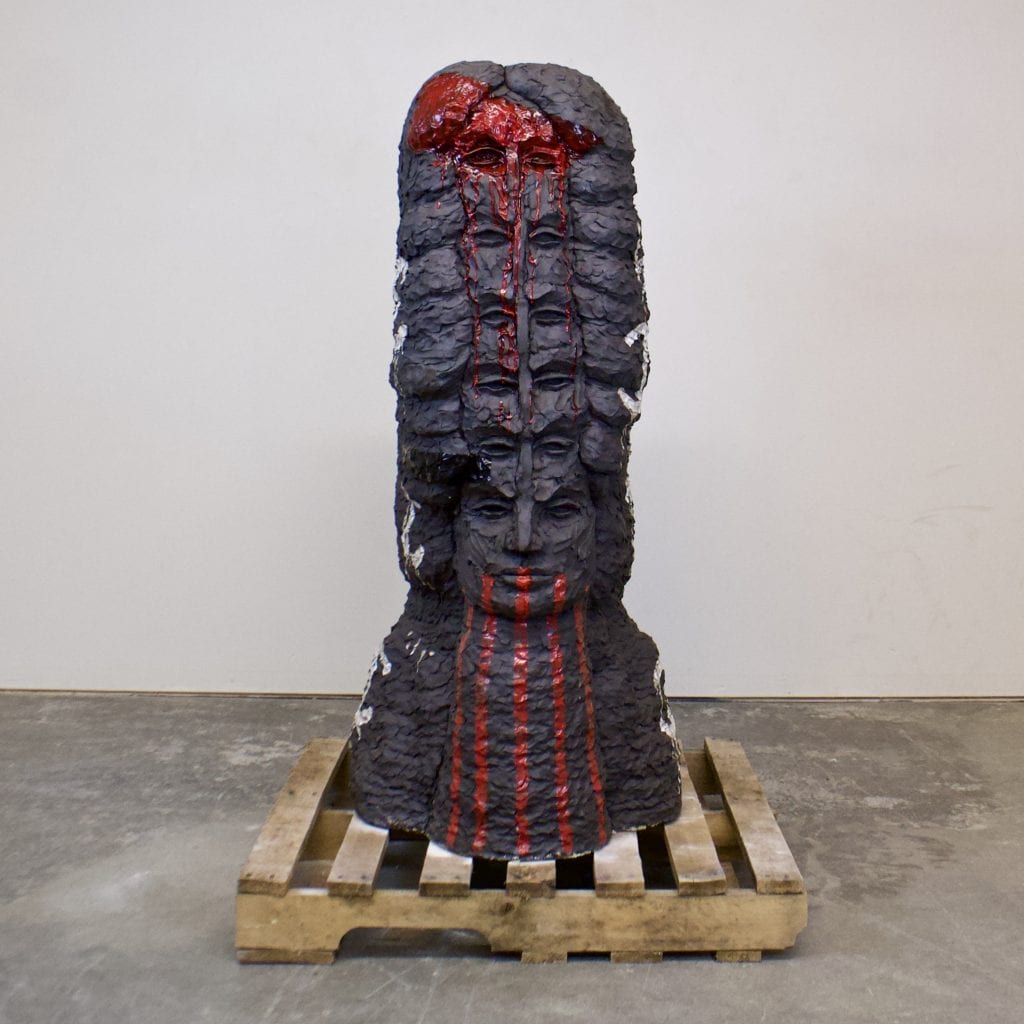
Courtesy of the artist
What’s a day in the studio like for you?
I wake up and make a large cup of coffee, the key to a great studio day. I’m usually in the studio between 10am and 11am. The next three hours for me is my most creative and productive time in my studio. 10am to 2pm consists of coil rolling to build heads, figures and faces. Right now, my work is quite large so my studio days can be physically draining. However, I also see it as a workout and it is consistently building my body stronger. I go through a lot of clay in studio, 2,400 pounds every 2-3 months. I used to make all my own clay, however since I use so much at a time, I now have to order it. This gives me the time and physical strength I need to make my sculptures. I will then eat lunch, check emails and start back in the studio again around 3pm. I may make another cup of coffee and listen to music to pump up again. Music may be the most essential element to a productive studio day, without it I couldn’t work.
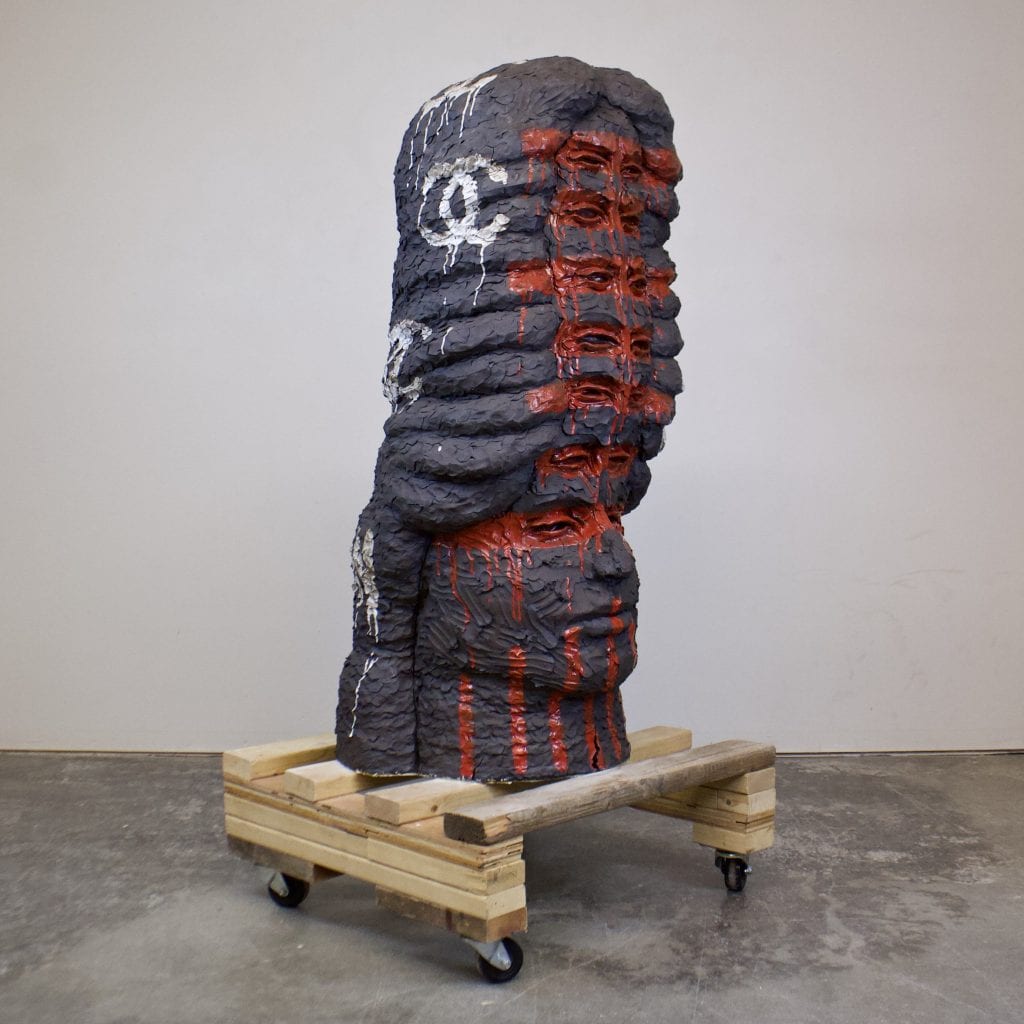
Courtesy of the artist
Has your work always taken on the style it currently embodies?
My work has always had a gestural looseness to it. I enjoy seeing the human touch experience in my work. I want my viewers to see where I had manipulated and pushed the clay. I want them to feel the energy and physicality of clay and ceramics as a material. I do not want my sculptures to look like a machine made them. They are meant to be powerful, emotional and experienced. My artwork is ever evolving but my style has always stayed consistent.
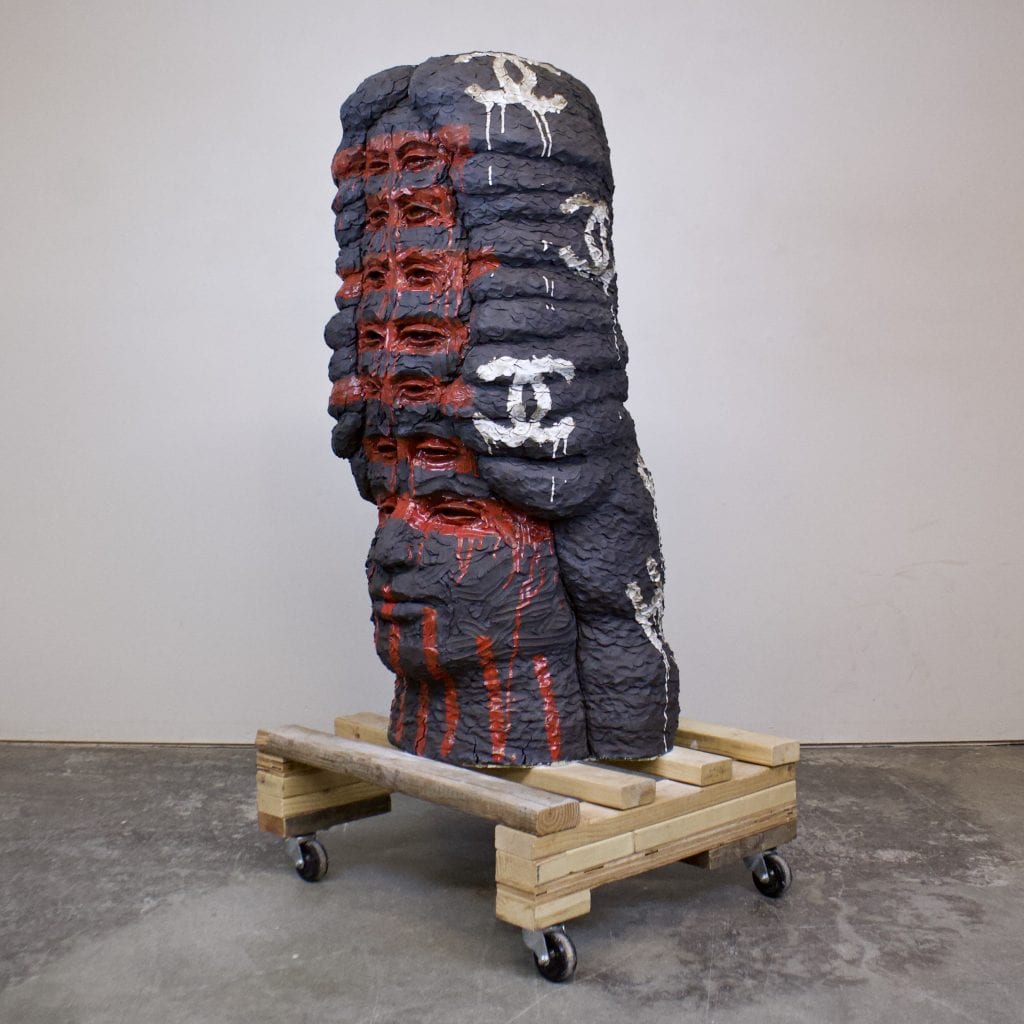
Courtesy of the artist
From where do you draw inspiration?
I draw inspiration from my experiences living as a Native American, woman and a millennial. I draw influence from my cultural heritage, history and tribal legacy. This is always entangled with the influence of my generation. I also take references from pop culture, music, movies and the internet. I feel myself and my artwork are in a constant battle of understanding traditional tribal knowledge and its importance versus the pressures of a 21st century mindset of a fast paced, money hungry, materialistic world. My art is an extension of me, as I continuously try to understand my place within the world, within my tribe, within society and within the fine art world.
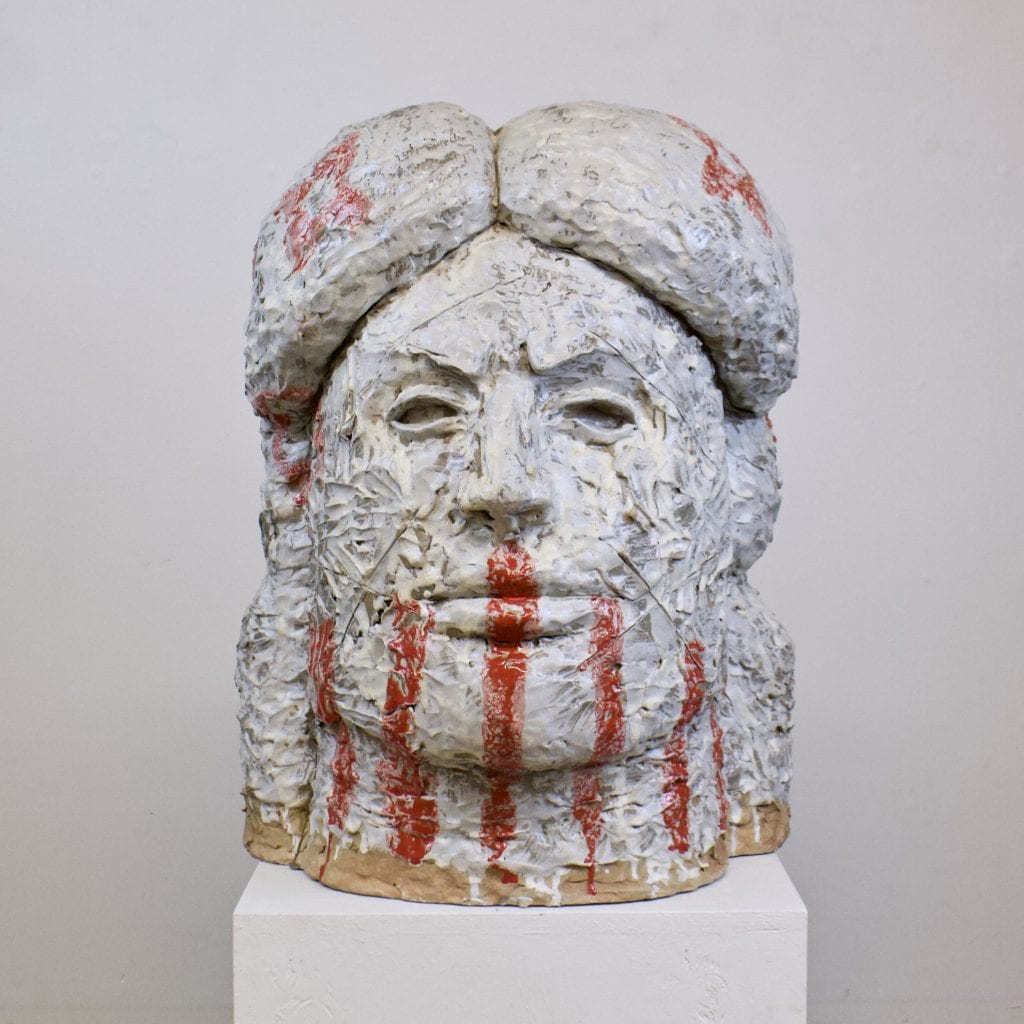
Courtesy of the artist
Why is your work significant to the bigger picture in art and society as a whole?
It is important for me to emphasize that Caddo people and American Indian people are still relevant and continue to build traditions and create with clay today. My artwork exists to break the mold of the Native American stereotype and to simply say: “we are still here, we are resilient and we are powerful.” Artists are the cultural preservationists of our time and that is why it is crucial for me to continue my practice in the art industry.
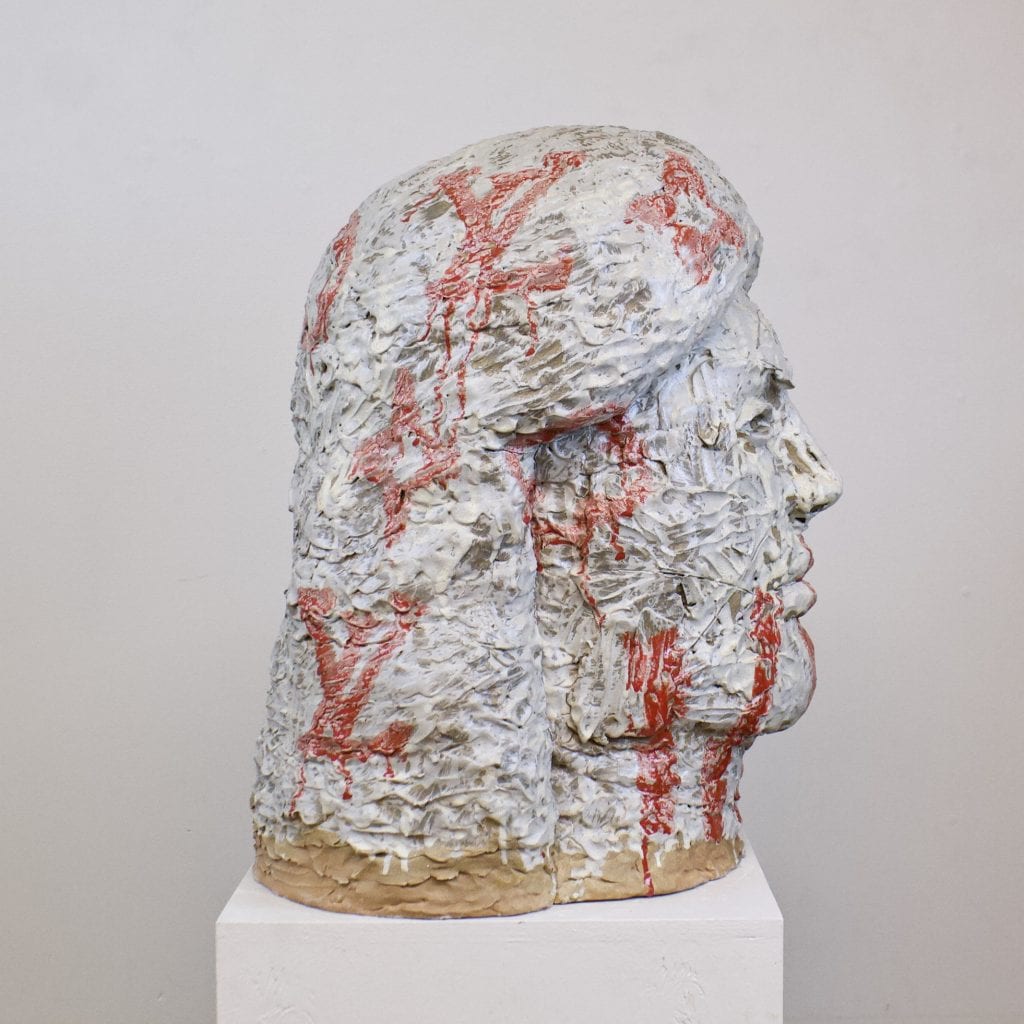
Courtesy of the artist
What source material do you base your work off of?
Besides taking influence from my own lived experiences, I am continuously studying the iconography at my own tribes pottery and the design elements on Caddo effigy vessels. I also source from regalia, ranging from Caddo dresses to ribbon skirts and beadwork from other tribes. I take influence from patterns and colors used for specific ceremonies and clothing. I also source from other monolithic pieces from around the world, including the olmec heads in Mexico and the giant Easter Island carvings. I am constantly going to art exhibitions and museums to see other artists, new and old. There are so many prolific voices in our field right now and it’s an exciting time to share this moment and platform. I am proud to be in this community and I think we need to help each other, support one another and listen to each others’ stories and experiences more than ever.

Courtesy of the artist
What’s next for you?
2020 will be a busy year and great time to see me and my work! I will have a solo show in New York in May at Jane Hartsook Gallery, a show at Union Hall Gallery in June (Denver, CO) and an exhibition at Gallery FRITZ (Santa Fe) in August during Santa Fe Indian Market.
I will also be traveling to Plymouth, U.K. for a project titled SETTLEMENT, which is a radical Indigenous-led performative encampment where fellow artist Cannupa Hanska Luger has invited over 27 Indigenous artists from North America to occupy Plymouth UK’s Central Park for four weeks of art and engagement for the commemoration of the Mayflower voyage.
I am currently a long-term resident at the Archie Bray Foundation for Ceramic Arts where I am making my sculptures. However, I am in the process and planning stages of building a studio. This is the next step for me and I couldn’t be more excited! To keep up with my artwork and support me, you can follow me on instagram @ravenhalfmoon or go to my website ravenhalfmoon.com.
At the end of every interview, we like to ask the artist to recommend a friend whose work you love for us to interview next. Who would you suggest?
Yatika Starr Fields, Black Belt Eagle Scout, Stephanie Big Eagle, Catherine Blackburn, Nathalie Standingcloud, Courtney M. Leonard.